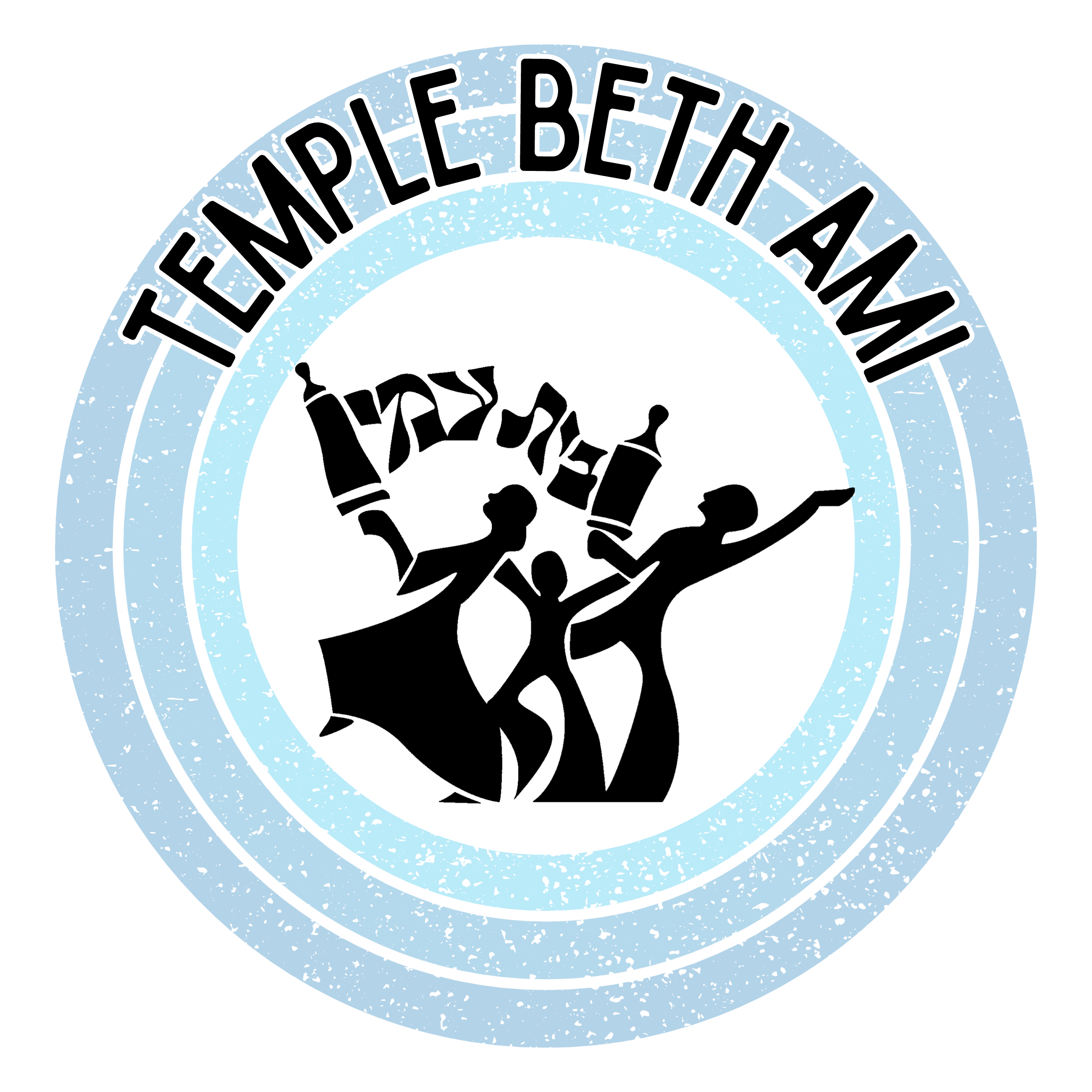Tazria-Metzora
Leviticus 12:1-15:33
Normally when I realize the Torah portion is Tazria-Metzora, I feel a bit of hesitation over having to sermonize on such an icky topic. You see-Tazria is about skin infections and people being in a state of impurity and then placed in isolation for a set amount of time. For the first time in, well, forever- I was excited when I realized this was the Torah Portion this Shabbat. Never has Tazria Metzora felt timelier and more relevant.
Leviticus chapter 13 begins with God instructing Moses and Aaron to tell the Israelite community that “When a person has on the skin of his body a swelling, rash, or a discoloration and it develops into tzaraat, a scaly affection on the skin of the body, it shall be reported to Aaron the priest or to one of his sons, the priests.” The priest then inspects the skin ailment which is often translated as leprosy but was more likely something similar to psoriasis, or a fungal infection or vitiligo-the loss of skin pigment. Now you can see-why I usually dread this Torah portion. The one who needs to be cleansed is instructed to wash his clothes, shave off all his hair and bathe in water, then he may be clean—in Hebrew, Tahor, literally pure. After that, he may enter the camp, but he may remain outside his tent 7 days.
These words ring somewhat familiar to our present situation. The directives are so particular and specific—today we are instructed how to wash our hands thoroughly, how to sterilize our groceries, and warned that the virus lives on surfaces. Though, contrary to some other opinions I would highly recommend against ingesting Lysol or any kind of bleach.
What I found interesting in reading this in light of the corona-virus, is that if the priest found the person to be tameh-unclean-he was quarantined for a minimum of 14 days (7 days after first hearing of the infection, and then we underwent another inspection and then was isolated another 7 days before entering back into the community) —the same number of days the CDC asked anyone who had traveled to an infected area, rode on an airplane or was exposed to someone with the infection to self-quarantine.
Later in Leviticus 13, verse 45 it explains, “As for the person with the tzaarat, their clothes shall be rent, the head shall be left bare, and the upper lip should be covered over.” (apparently our ancestors were making mask as well). And that person should call out “Tameh-Tameh—Impure, Impure,” wherever he went. Being impure, that person shall dwell apart—in a dwelling outside the camp.
When my nephew’s gap year program in Israel was cut short due to the Corona virus—not only was it painful for him and his family that he had to come home months early, but what seemed unbearable was my brother telling me that he and his wife who are my nephew’s mother and father were not able to hug their son when he got off that long airplane flight home from Israel. They had not seen my nephew for months and they couldn’t touch him. He was relegated to his bedroom for two weeks. He jokingly posted a picture of a banana his father had pushed under the door for him. Was this really necessary I wondered?
When we heard of the CDC’s recommendations to many of us it seemed a bit excessive, and overly cautious. Yet retrospectively, if we had isolated the virus and done a better job quarantining those possibility infected perhaps, we could have prevented such a high spread within our country. When we first heard of the Corona Virus in Wuhan, China, there were stories of people being arrested for having a fever in the street. At the time, these punishments seemed excessive—perhaps even dehumanizing. Now people are lauding China’s ability for containment.
This is the first year I have found Tazria Metzora relatable. I chalked up their isolating those who were different to xenophobia and related it to how we alienate and marginalize those who appear different.
Yet, in light of current events, because of Covid-19, I have come to see this Torah portion differently. While at first it seems cruel to isolate people who have possible contagion—in fact—quite the opposite, it is quite necessary. While it feels cruel to tell our loved ones we cannot see them because we want to protect them from illness—it is not done out of malice but rather out of love. We realize that there are sacrifices we must make individually to protect the rest of the community. Yet some of us rebelled against it because it’s so counterintuitive.
It really goes that show that before we find ourselves in a situation, it is so easy for us to place judgments on others—yet when we are confronted with similar challenges, we often find that there is wisdom in what we could not understand before. In the Mishna, in Pirke Avot, the Ethics of our Ancestors it warns us, “Do not judge another until you are in his place.” What seems nonsensical out of context—can actually be sage advice when we are faced with certain circumstances. Something that seems over exaggerated and antiquated is now exactly what we are doing as a modern society.
While Tazria-Metzoria talks more about the prevention of disease, it also addresses the idea of re-entry into society post sickness. (Leviticus 13:8)
While isolation in Tazria Metzoria was done to cure uncleanliness before re-entering society, for the majority of us social distancing and the stay at home order is more about preventing infection.
Rabbi Dov Linzer of Chovevi Torah asks some interesting questions:
- What does it mean to come back from an extended period of isolation?
- How do we reintegrate into society?
- How do we recreate that human society?
- And what rituals do we have for re-entry?
These are discussions the staff and board at Temple Ami have begun to have. We have to plan for a post COVID Reality. At Governor Hogan’s Press Conference this afternoon, he very broadly laid out Maryland’s Roadmap to Recovery. We are all eager to know when life will “go back to normal” but reality is it will take time and need to be gradual. There will be a new normal. But again, this will be a gradual process. It could be equated to having a sprained ankle—after a period of time we feel better—and the doctor tells us we are healing but we are not completely headed. Emotionally we want to go back on the field and compete -we want this so badly. But intellectually we understand that if we do not take the proper time to heal, we will end up creating a more devastating and lasting damage.
I was struck by the length of time Governor Hogan chose to mark when we could enter phase one when he would lift the Stay at Home order. The order that we can return to the camp, to speak in biblical language.
Governor Hogan said they will mark a 14-day downward trend or a 14-day plateau where we don’t see any increases in infections, hospitalization and ICU visits. 14 days I thought! Wow! Just like our ancestors! Perhaps there is greater wisdom from our ancestors than we ever realized…14 days before we can say we are changing our status from tameh-afflicted- to tahor-to clean and allowed to reenter society. But with a slow and thoughtful re-entry.
When Governor Hogan announced that in the first stage of re-entry, we will possibly resume some outdoor services that made me optimistic about a summer Picnic Shabbat or a Shabbat Hike! And if things seemed to follow this trajectory, then it seems we would slowly start to return to work and be allowed to gather for indoor religious ceremonies with limited capacity. To the final stage when we can gain worship together in large social gatherings and visit our most vulnerable members of society.
I always begin the press conferences so hopeful and eager for information and often leave frustrated. We want to know when this will be over! We wanted answers that we simply don’t have. We are impatient, we feel adrift in uncharted waters.
This Shabbat we begin a new Hebrew month, the month of Iyar—the month between Nisan which contains Passover when we celebrated our Freedom from Slavery and Sivan, which contains the holiday of Shavuot where we reenact the revelation of Torah at Mount Sinai. During these 7 Shavuot -these seven weeks between Passover and Shavuot-we count the Omer—each of these 49 days.
While we know when the days of the Omer will end, our ancestors wandering in the wilderness did not know when they would receive Torah, nor did they know journey would end. They didn’t know how long it would be until they made it to the Promised Land. So, let us take it day by day—not looking too far ahead. As hard as it is to feel so paralyzed in this time of isolation—we know that if we take the advice of our tradition, and of the Heath Care experts, that there will be a time when we can join back together, with new appreciation for simple things we took for granted—leaving the house, a manicure, a coffee with a friend, a haircut! And just as times are hard for us—we worry about the health of loved ones, we miss our friends and family, and we are taking on new roles and routines—we must remember that even though this feels endless-it will not go on forever.Let us find some moment of beauty in each day—may we find one thing for which we can express gratitude, and may we pray that God keeps each of us healthy both physically and mentally as we wait for healing. Right now, our world is Tameh-Afflicted by sickness—but once again we will be Tahor—Clean and Pure.




